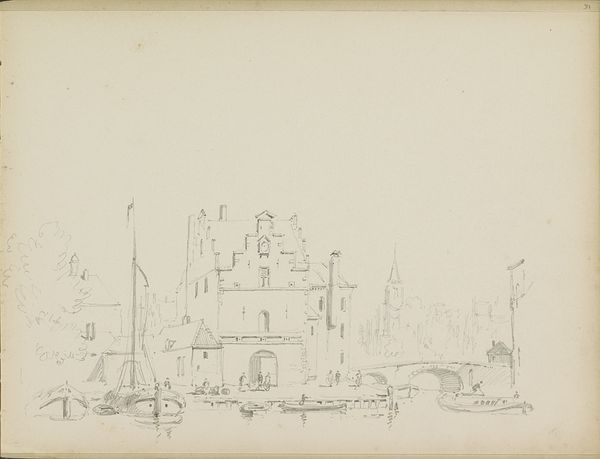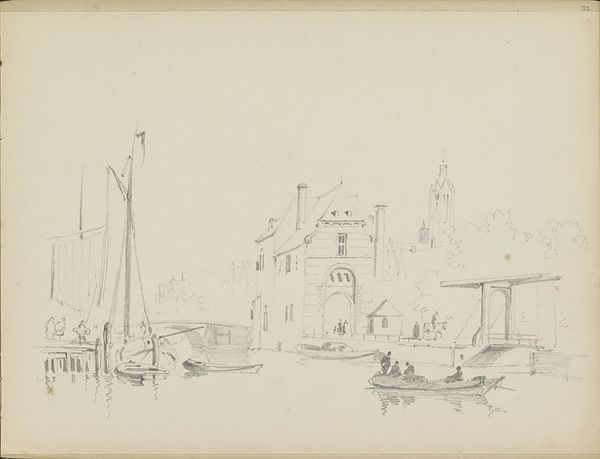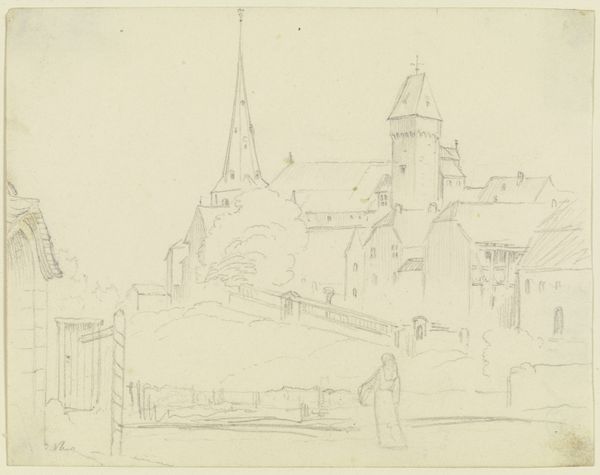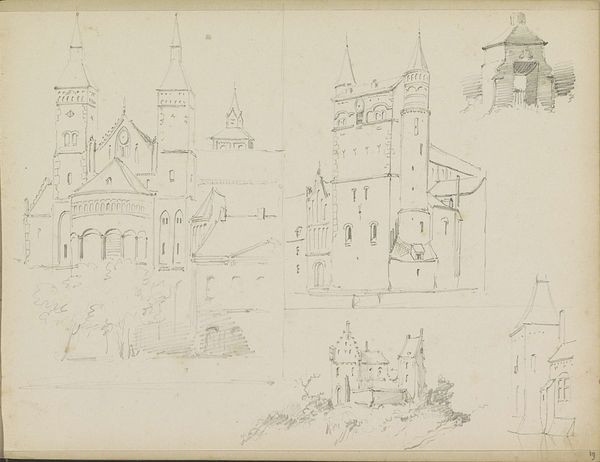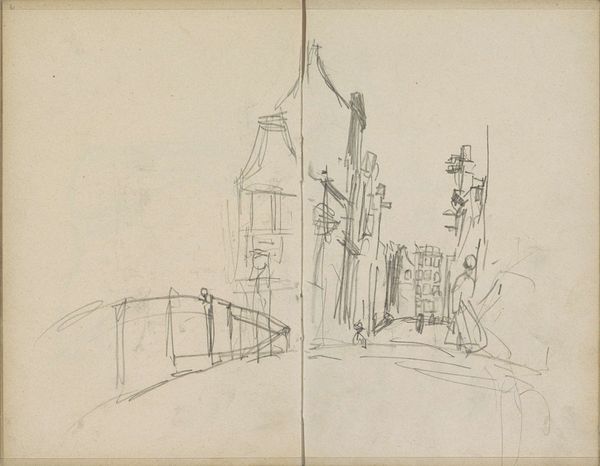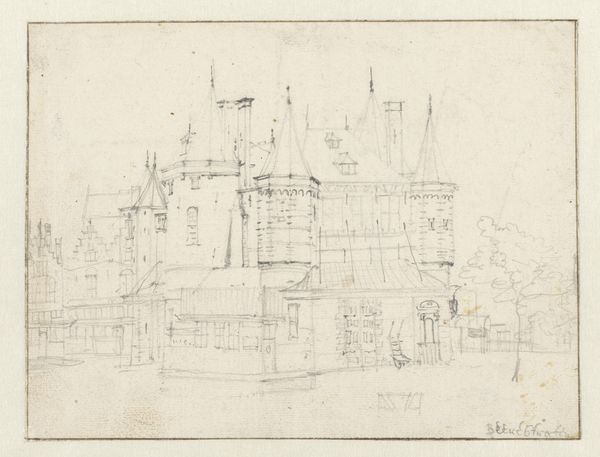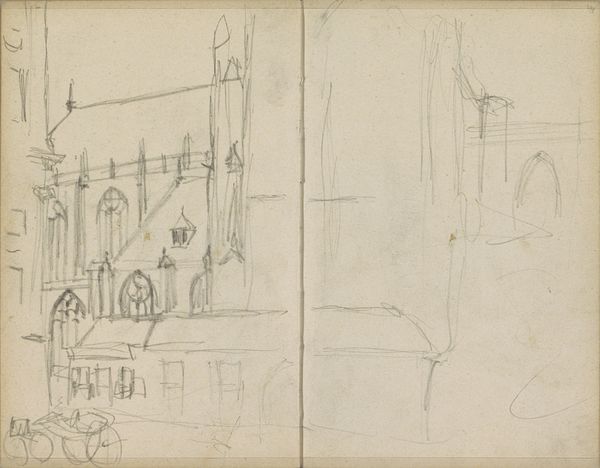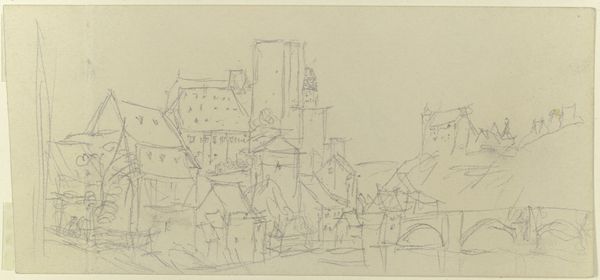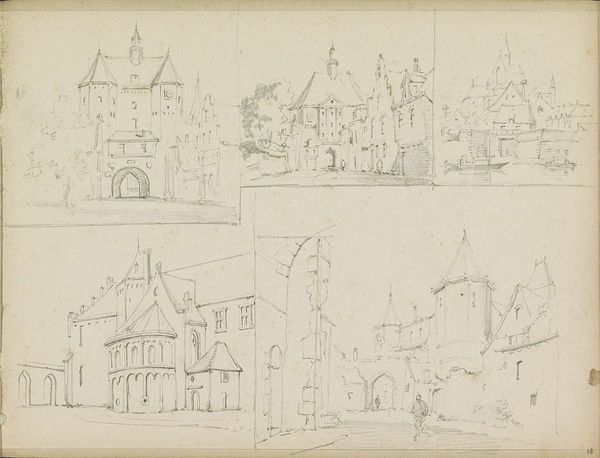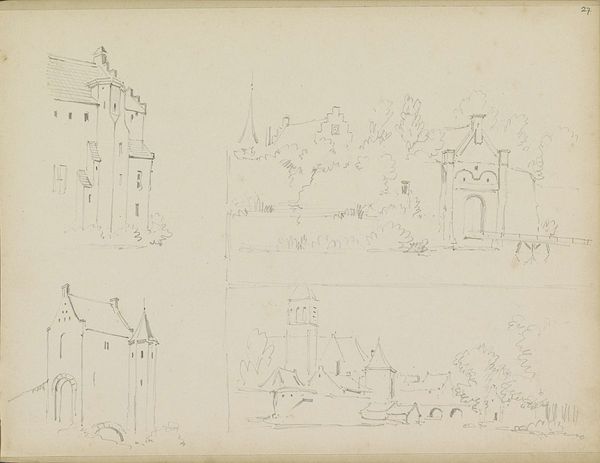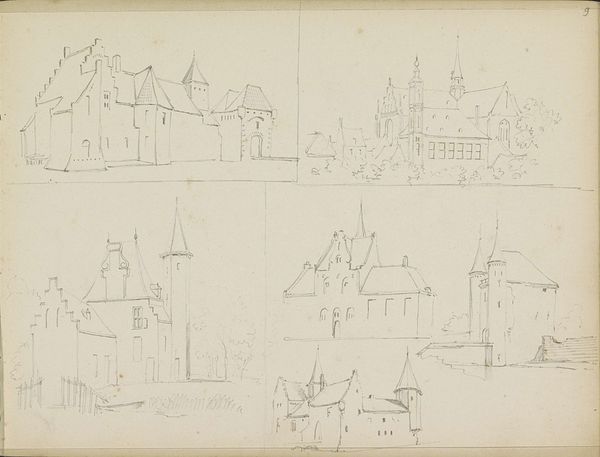
drawing, pencil
#
drawing
#
landscape
#
etching
#
form
#
pencil
#
line
#
cityscape
#
realism
Copyright: Rijks Museum: Open Domain
Editor: This work is titled "Twee stadsgezichten en twee versterkte gebouwen," dating from sometime between 1828 and 1897, and attributed to Adrianus Eversen. It’s a drawing with pencil and etching of four different landscape architectural scenes. I find the composition, especially with the four scenes placed together, almost map-like or diagrammatic. What do you make of this, especially given its possible timeframe? Curator: It strikes me as a fascinating record of architectural power, but also vulnerability, captured during a period of intense social and political transformation. Consider the timeframe. The 19th century witnessed burgeoning industrialization, urbanization, and shifting power dynamics. How might these seemingly simple cityscapes and fortified buildings speak to anxieties surrounding national identity, security, and the changing role of the state? Editor: That’s interesting! I hadn’t thought about the 'security' aspect. Is that why the ‘versterkte gebouwen’ or fortified buildings are depicted? Curator: Precisely! The presence of fortifications suggests concerns about defense and control, which would have deeply resonated within different segments of the population during a period marked by both internal and external pressures. Who are these fortifications meant to protect, and from whom? The artist's choice of perspective and level of detail invites further consideration of those questions. It can also show us, especially through its composition, a sharp difference between different communities living in the city: The Port versus The Fortress for instance. What is gained by drawing those together on one sheet of paper? Editor: I see! It’s like placing different power structures side by side to highlight their relationship. This definitely gives me a fresh perspective to think about. Curator: And that’s the beauty of art! It offers an invitation to critically examine power structures and consider marginalized voices of the period. Editor: Absolutely, I now have a much richer understanding of how socio-political issues influence not only what art is created, but also how! Curator: Indeed. By bridging art history with critical theory, we can unpack the complex layers embedded within these drawings.
Comments
No comments
Be the first to comment and join the conversation on the ultimate creative platform.
